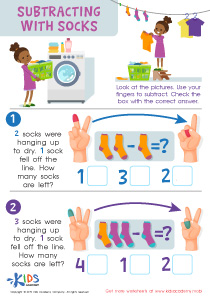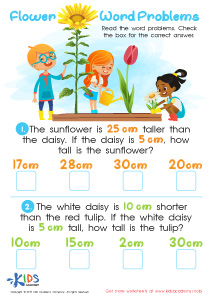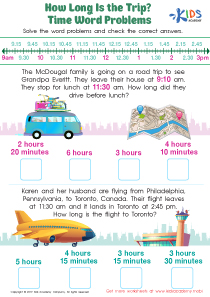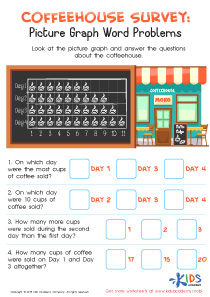Easy Two-step Word Problems Worksheets for Ages 8-9
5 filtered results
-
From - To
Introducing our Easy Two-step Word Problems worksheets, expertly crafted for children aged 8-9 years. These learning downloadable worksheets are designed to build and enhance essential problem-solving skills through engaging and interactive content. Each worksheet challenges young learners with carefully structured two-step scenarios, encouraging critical thinking and application of basic mathematical concepts. Perfect for both classroom use and home practice, our worksheets provide a fun, effective way to bolster your child's confidence and proficiency in math. Step into success with our easy-to-follow worksheets and watch as your child masters the art of solving word problems effortlessly!
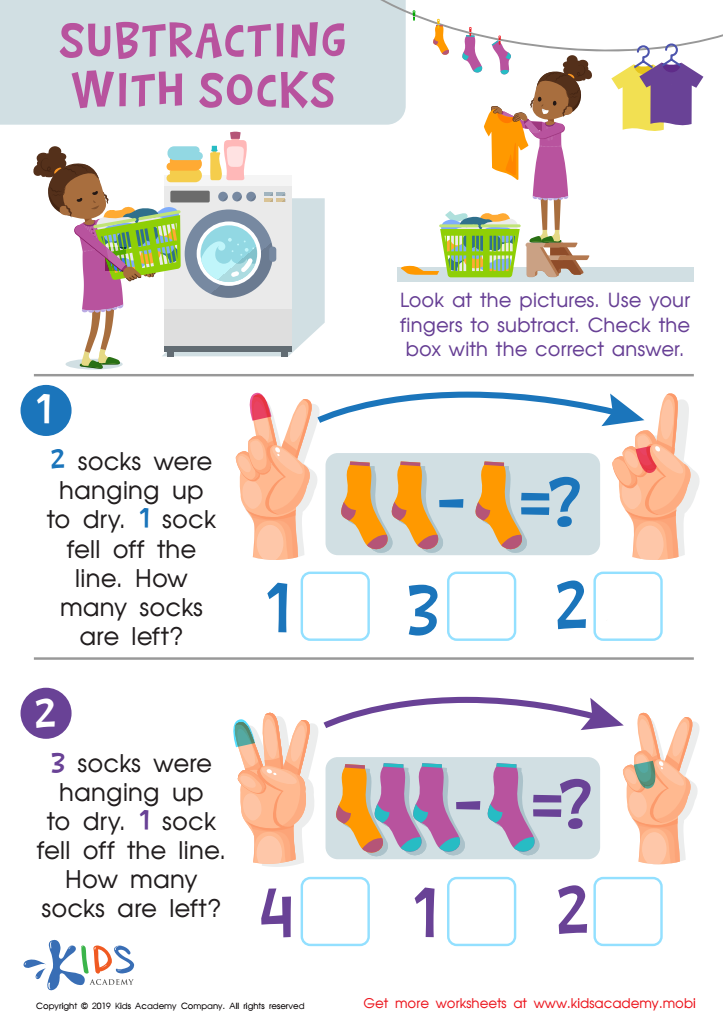

Subtracting Socks Worksheet
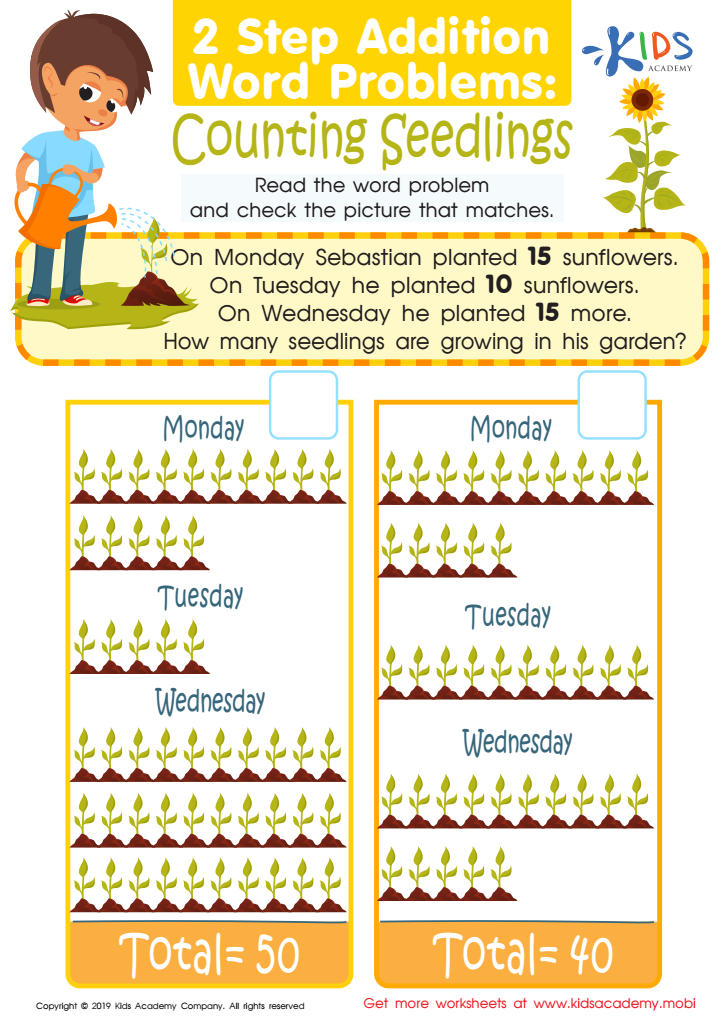

Counting Seedlings Worksheet


Using Number Sentences to Solve Problems Worksheet
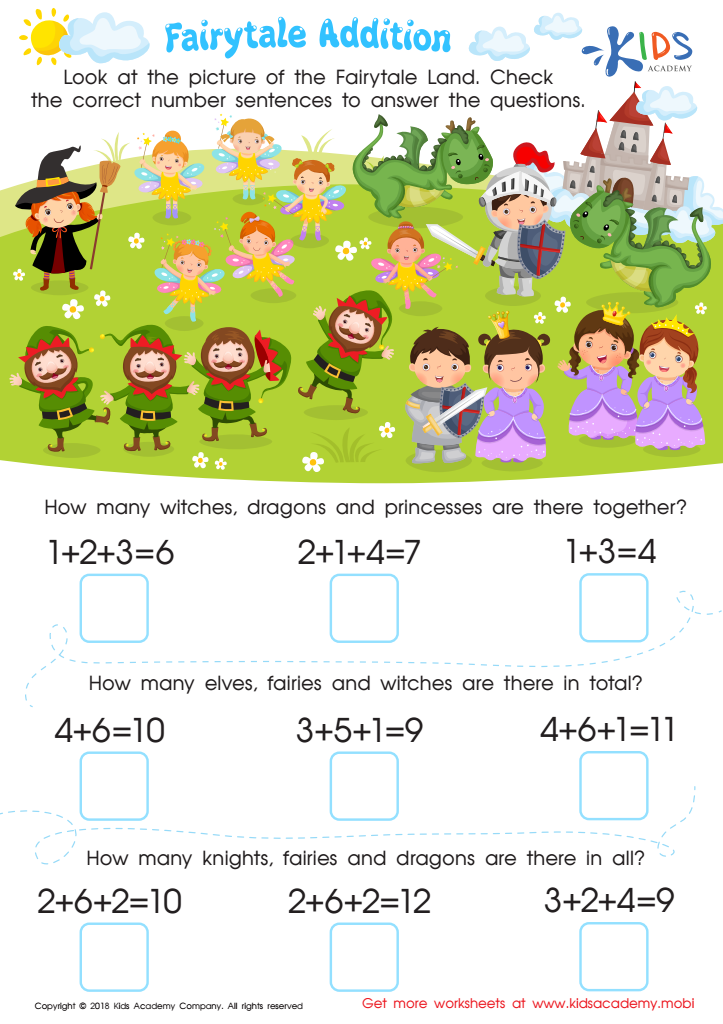

Fairytale Addition Worksheet
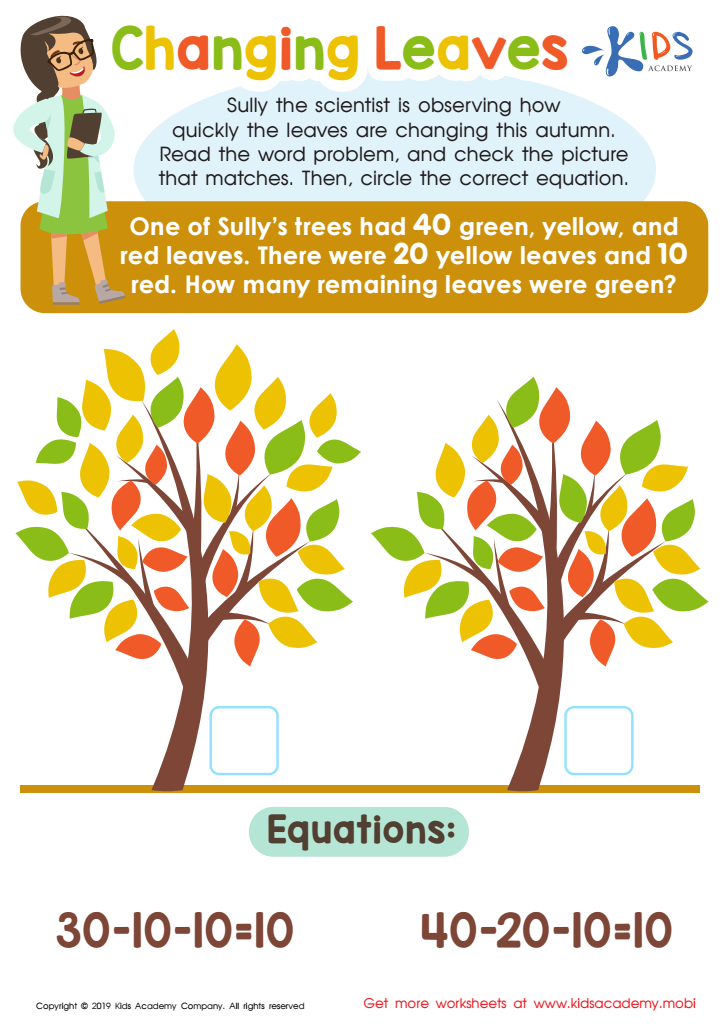

Changing Leaves Worksheet
The Value of Easy Worksheets on Two-Step Word Problems for Children Aged 8-9 Years
In the world of elementary education, the development of a child's problem-solving skills is paramount. Among the most effective tools to enhance these skills are well-crafted learning homework sheets focusing on two-step word problems. Particularly for children aged 8-9 years, these worksheets play a pivotal role in blending mathematical concepts with real-world applications. Let's explore the importance and benefits of utilizing easy worksheets on two-step word problems for children in this age group.
Building Blocks of Mathematical Thinking
At the ages of 8 to 9, children are transitioning from simple arithmetic—such as addition and subtraction—to more complex mathematical operations, including multiplication and division. Two-step word problems are exercises where a child needs to perform two sequential operations to arrive at the solution. These problems are crucial because they mirror the multi-step nature of most real-life problems. Easy worksheets designed for this age group help in gently introducing the concept of operations following each other, laying a strong foundation for advanced mathematical thinking and reasoning.
Enhancing Cognitive Abilities
Learning homework sheets that focus on two-step word problems demand a certain level of cognitive engagement. Children are required not only to understand the problem at hand but also to decide the order of operations and the methods to apply. This process enhances critical thinking and promotes a deeper understanding of logical processing. Such skills are invaluable, extending beyond mathematics to support overall academic and personal growth.
Boosting Confidence and Independence
Confidence in academic abilities significantly affects a child’s motivation and attitude towards learning. Easy worksheets on two-step word problems are designed to challenge students just enough to keep them engaged without causing frustration. Successfully solving these problems can boost a child’s confidence immensely. With regular practice, children become more independent in their problem-solving approach, relying less on adult guidance and more on their own reasoning and capabilities.
Practical Life Skills
The ability to solve two-step word problems also translates into practical life skills. Whether it is following a recipe, planning a schedule, or managing time, the skills of breaking down a problem into manageable steps and using logic to solve each part are universally applicable. Learning homework sheets that focus on these types of problems prepare children to face and solve everyday challenges.
Support for Diverse Learning Styles
Every child learns differently, and the versatility of two-step word problems allows educators to cater to diverse learning styles. Whether a child is a visual learner, a kinesthetic learner, or an auditory processor, word problems can be adapted to meet their unique needs. Worksheets can include visual aids, story-based problems, or even incorporate physical activities to solve the problems, making them accessible and engaging to a wider range of learners.
Encouragement of Interdisciplinary Learning
One of the significant advantages of two-step word problems is their ability to integrate concepts from various disciplines. These problems often include scenarios that relate to geography, science, or everyday life, which encourages children to make connections across different subjects. This interdisciplinary approach not only enriches the learning experience but also makes it more meaningful and relatable to the real world. Learning homework sheets that utilize two-step word problems can seamlessly introduce concepts from other subjects, fostering a holistic educational environment.
Continuous Learning and Adaptability
The design of easy worksheets on two-step word problems allows for incremental challenges. As children master the basics, the complexity of the problems can be increased gradually. This adaptability helps in catering to the individual learning pace of each child, ensuring that they are neither under-challenged nor overwhelmed. Continuous exposure to varying degrees of difficulty prepares children to adapt to new challenges and situations, a critical skill in both academic and personal contexts.
Parental and Teacher Engagement
Finally, easy worksheets on two-step word problems provide a perfect opportunity for parents and teachers to engage with children’s learning processes. These worksheets not only allow educators to track the child’s progress but also enable parents to be a part of their child's educational journey. Solving these problems together can be a collaborative activity that strengthens the child’s understanding and allows for immediate feedback and encouragement.
In conclusion, learning homework sheets focusing on easy two-step word problems are an invaluable resource for children aged 8-9 years. They not only build foundational mathematical skills but also enhance cognitive abilities, boost confidence, and prepare children for real-life situations. By incorporating these worksheets into daily learning routines, educators and parents can provide children with the tools they need to succeed in school and beyond.
 Assign to My Students
Assign to My Students




